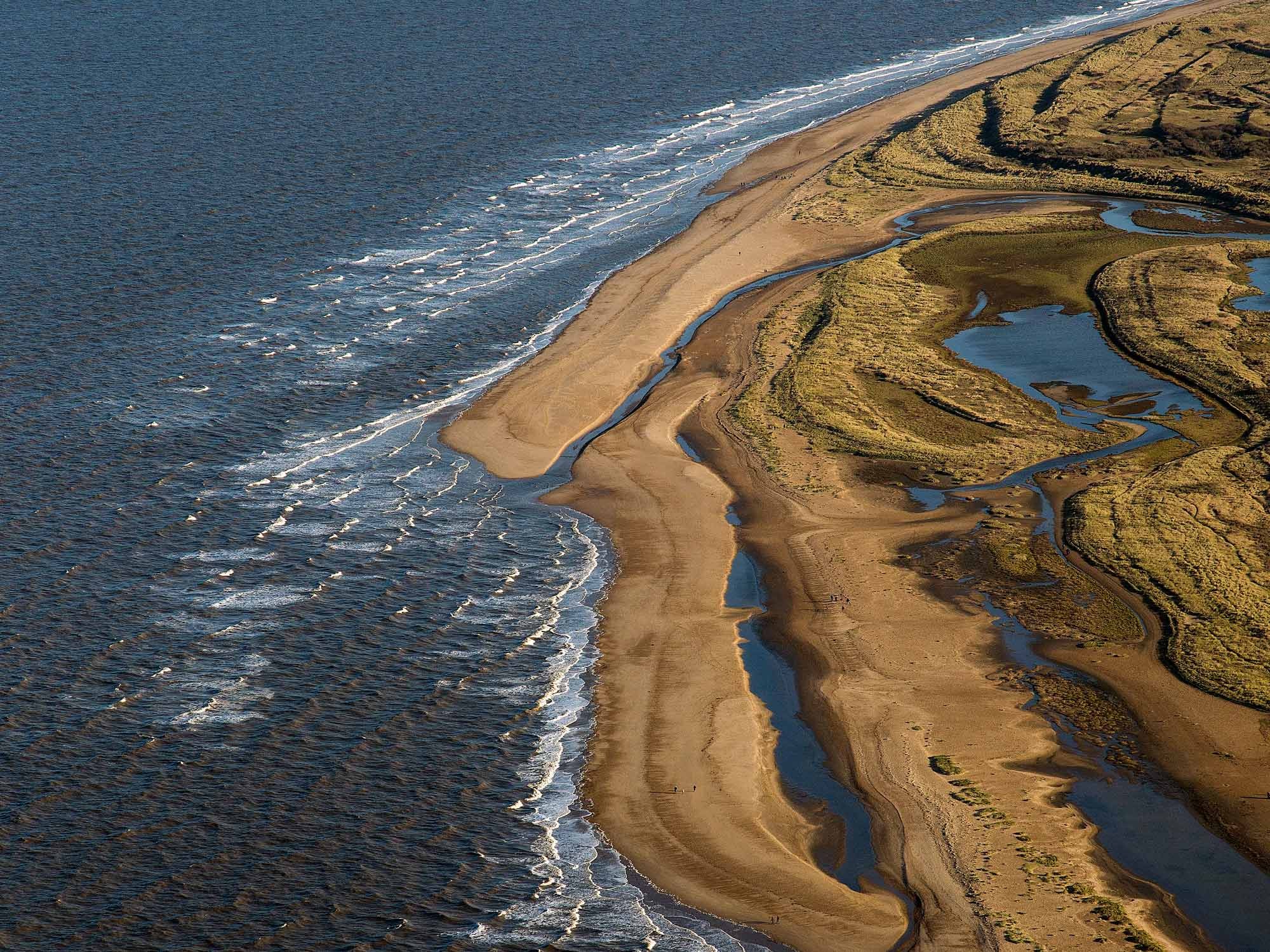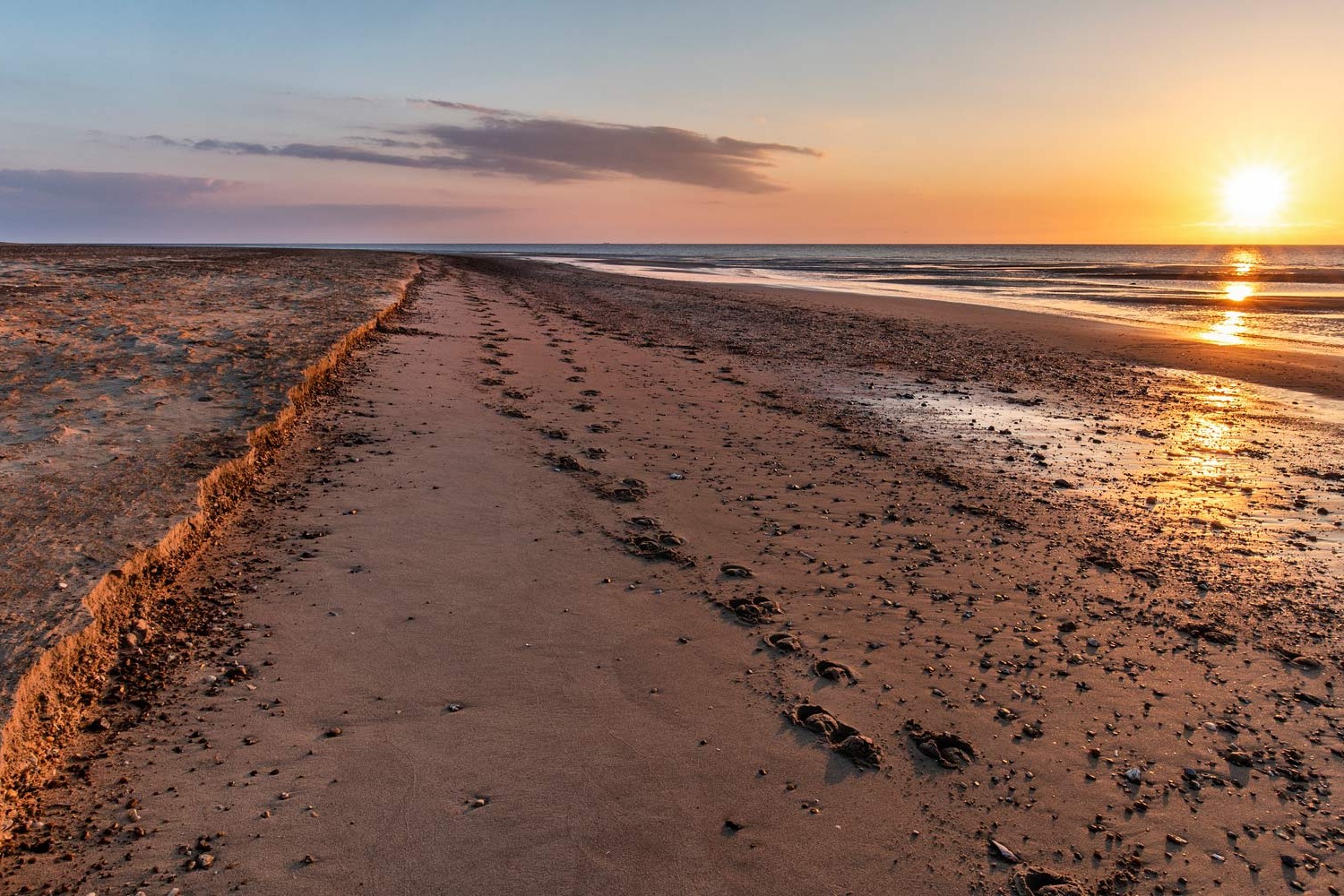
Bitterns, butterflies, barn owls and Butlins...
Shaped by both man and the elements, it’s one of the most beautiful coastal locations in Norfolk – and one of the most important in the country. We take a closer look at NWT nature reserve at Holme Dunes
At first, you’d be forgiven for thinking there was little more to Holme Dunes than massive skies and windswept panoramic views. However, this beautiful corner of northwest Norfolk is home to a nationally-important nature reserve and hides a fascinating and unusually long history that goes back at least 4,000 years – to when the Bronze Age timber circle known as ‘Seahenge’ was hidden by the elements until its chance discovery in 1998.
First impressions suggest a perfectly natural environment, but Holme Dunes (and its abundant wildlife) owe a considerable debt to human intervention. During the Second World War, the area was enlisted to support the war effort – existing dunes were used as a firing range, and new ones were created with bulldozers to support a small railway that carried mobile targets. Somewhat fortuitously, the associated removal of sand resulted in the creation of shallow freshwater pools, which are now home to some of Holme Dunes’ most important species.
Not that anyone was thinking of wildlife conservation in the immediate post-war period. As Billy Butlin started turning holiday camps into a multimillion-pound industry, he set his sights on Holme Dunes – and plans still exist for the proposed camp’s chalets.
That all changed on the night of 31st January 1952, when a catastrophic combination of winds, atmospheric pressure and high tides devastated coasts of the Netherlands, Belgium, England and Scotland. Almost 10% of Holland’s farmland was flooded, and in northwest Norfolk the raging waters (which were up to six feet higher than normal) resulted in widespread destruction and the deaths of 80 people.
It meant that Butlin’s Holme Dunes Resort was never built – and the land was eventually purchased in 1965 by the Norfolk Wildlife Trust (then known as the Norfolk Naturalists Trust) which is the oldest of all Britain’s 47 such trusts. Today, the NWT has almost 40,000 members and manages more than 50 nature reserves and other protected sites – and for the last 54 years at Holme has worked successfully with local landowners to create a 192-hectare (470-acre) nature reserve that contains mudflats, foreshore, sand dunes and dune ‘slacks’ (the damp, low-lying areas between the dunes), scrub, pines, and both salt and freshwater marshes.
This extraordinarily rich environment provides a wide range of habitats for a rich population of flora and fauna that includes natterjack toads (it’s actually Norfolk’s most important site), butterflies and dragonflies, interesting coastal plants, stripe-winged grasshoppers (once very scarce in north Norfolk), and at least 320 bird species. In fact, when it comes to native and migrating birds, the reserve at Holme Dunes is of national significance.
In 1992 the very first Rüppell’s warbler ever seen in Norfolk was recorded at the reserve (it was only the fourth sighting of the bird in the whole of the UK) as was a yellow-breasted bunting – which hadn’t been seen alive in Norfolk since the days of Victorian bird collectors.
And the following year the reserve witnessed the UK’s highest-ever count of a single-species wader flock, thanks to a spectacular high-tide roost of almost 200,000 knot.
The wet reedbeds created by the NWT have attracted marsh harriers to the reserve, and the idea that these magnificent birds would have a winter roost at Holme Dunes would have been unthinkable until quite recently. It’s also one of the best places in Norfolk to see barn owls – time your visit in the late afternoon and keep an eye out for them silently hunting over the grazing marshes.
Holme Dunes is a fascinating example of how human activity can have a positive impact on the environment. The freshwater grazing marsh, for example, was created almost by default in the 1860s, when embankments were built to prevent the twice-daily invasion of the sea – and today it’s a critical habitat for birds such as lapwings, tufted ducks and wigeon.
Having one of the UK’s most outstanding (and important) beaches on our doorstep is a very real privilege – and it’s one we should all be concerned with protecting and preserving.

